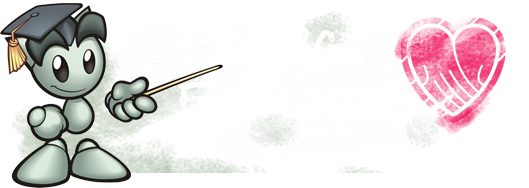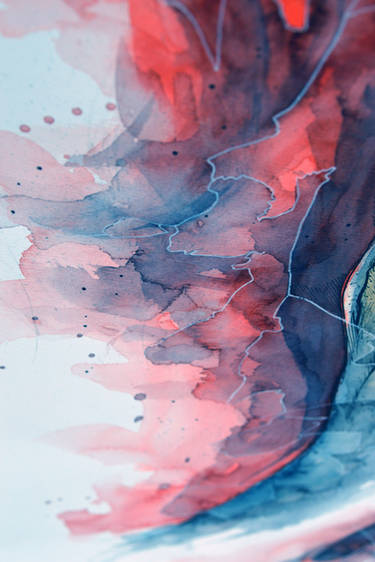Watercolor Techniques I
Traditional Art Week at projecteducate continues! During Artist's Toolbox weeks, I've published articles dedicated to watercolor tools (Watercolor Equipment I - Basic Tools, Watercolor Equipment II - Additional Tools). You should go grab your tools now, because the next series of articles will be focusing on painting methods. I sincerely hope these will help you and wish you all happy painting!

Laying a wash
A wash is a large area in a watercolor painting where the paint flow and diffusion have been manipulated to efface individual brushstrokes. Within wash areas, color transitions are usually gradual and span analogous hues. Laying a wash is one of the most satisfying tasks in watercolor painting. Essentials of this skill are not difficult to learn, but to master the craft you will have to practice a bit. Washes are mostly used to create a flawless portrait background or a landscape sky that shades bright to mist.
▲ Tools:
You'll need a piece of watercolor paper stretched on a drawing board, a large flat brush, a jar of clean water, a cloth or a tissue for drying your brush and something to prop your drawing board up at a 30-degree angle to the horizontal.
▲ How to:
1 - You will need to tilt your painting surface first. The tilt creates a fall line or directed gravitational flow across the paper. This pulls the wash solution from high to low and collects the excess liquid in a reservoir, called the wash bead, along the bottom edge of the last brushstroke. Each brushstroke cuts into the existing wash bead and creates a wetted area underneath it, allowing it to flow down the stroke to the new edge.
2 - Charge your brush with paint. Starting at the top edge of the paper, put down a broad horizontal stroke, from one side to the other as if you were drawing a line with a pencil. Don't lift your brush until you're all the way across.
3 - Add more paint to your brush, then make another horizontal stroke making sure that the tip of your brush picks up the wash bead from the previous stripe. Don't paint above the bead, you'll ruin the evenness of your wash. You should work quickly to prevent lines in your wash.
4 - Continue this way until you get to the bottom of the paper. Squeeze the excess paint from your brush between a fold of cloth, then use the brush tip to lift the excess paint from the last stroke. Important > Leave the painting surface tilted until the wash dries completely.

Back to Top
<da:thumb id="53385346"/> <da:thumb id="199086050"/>
Painting a flat watercolor wash
Painting a graded watercolor wash
This article and many others was brought to you by
2 - Charge your brush with paint. Starting at the top edge of the paper, put down a broad horizontal stroke, from one side to the other as if you were drawing a line with a pencil. Don't lift your brush until you're all the way across.
3 - Add more paint to your brush, then make another horizontal stroke making sure that the tip of your brush picks up the wash bead from the previous stripe. Don't paint above the bead, you'll ruin the evenness of your wash. You should work quickly to prevent lines in your wash.
4 - Continue this way until you get to the bottom of the paper. Squeeze the excess paint from your brush between a fold of cloth, then use the brush tip to lift the excess paint from the last stroke. Important > Leave the painting surface tilted until the wash dries completely.
▲ Graded wash
A graded wash is wash in which the color lightens towards the bottom of the page. To create graded wash, work in a similar way than explained above, but instead of loading your brush with more paint for each subsequent stroke, you load your brush with clean water thereby diluting the wash. Lift the excess water from the last stroke and leave to dry at an angle.

Back to Top
Wonderful watercolor tutorials to see
<da:thumb id="53385346"/> <da:thumb id="199086050"/>
Painting a flat watercolor wash
Painting a graded watercolor wash




